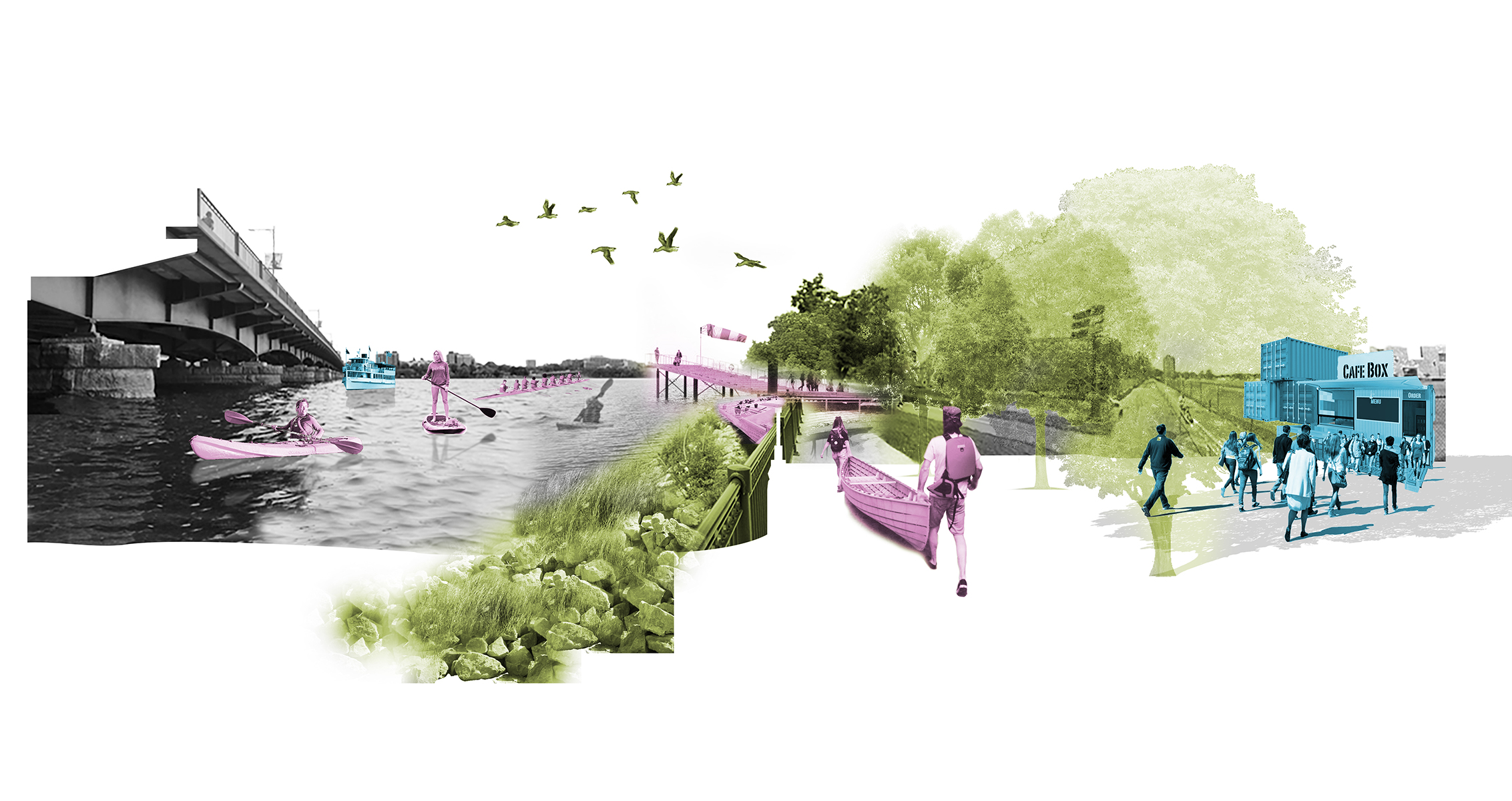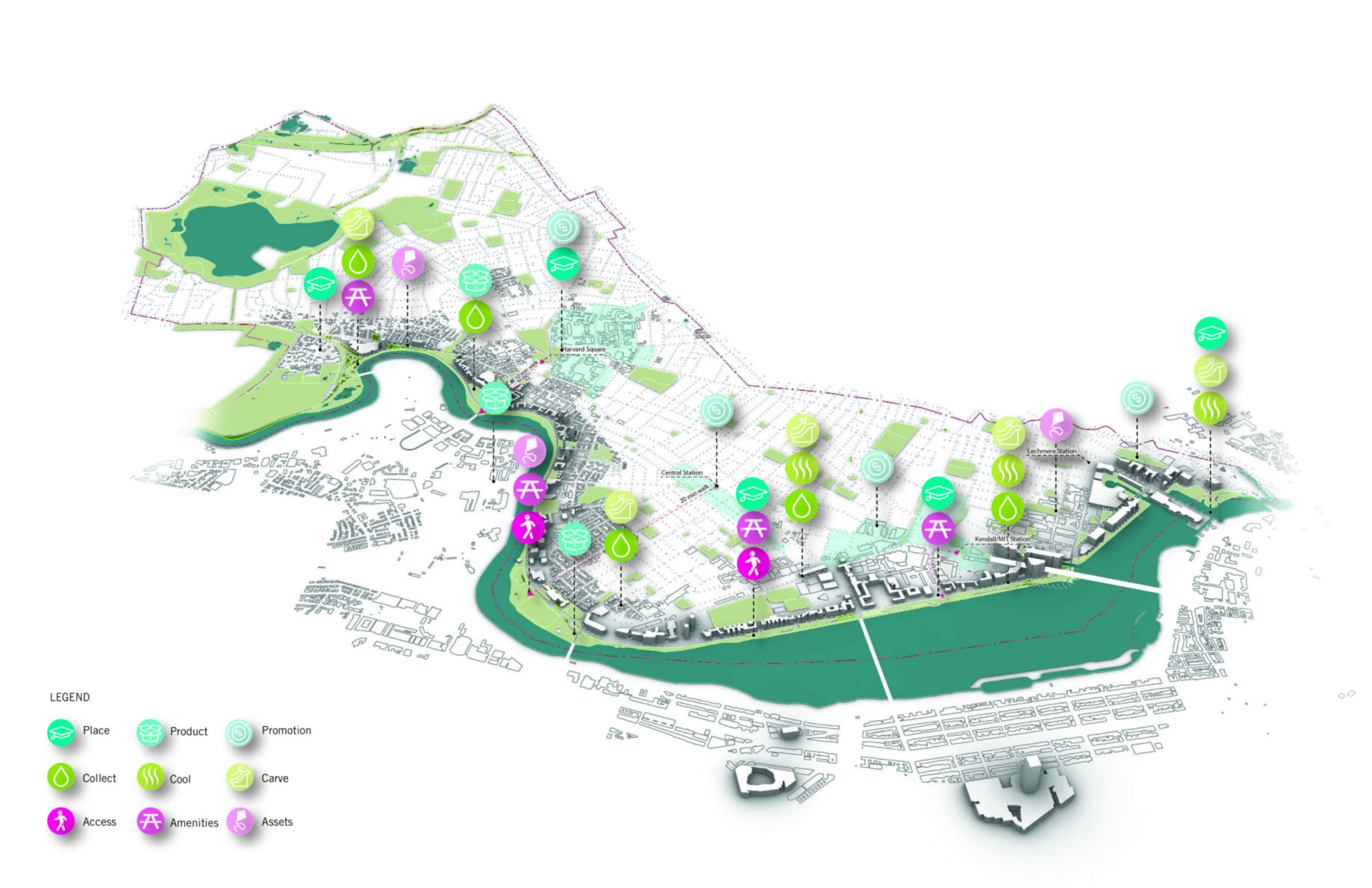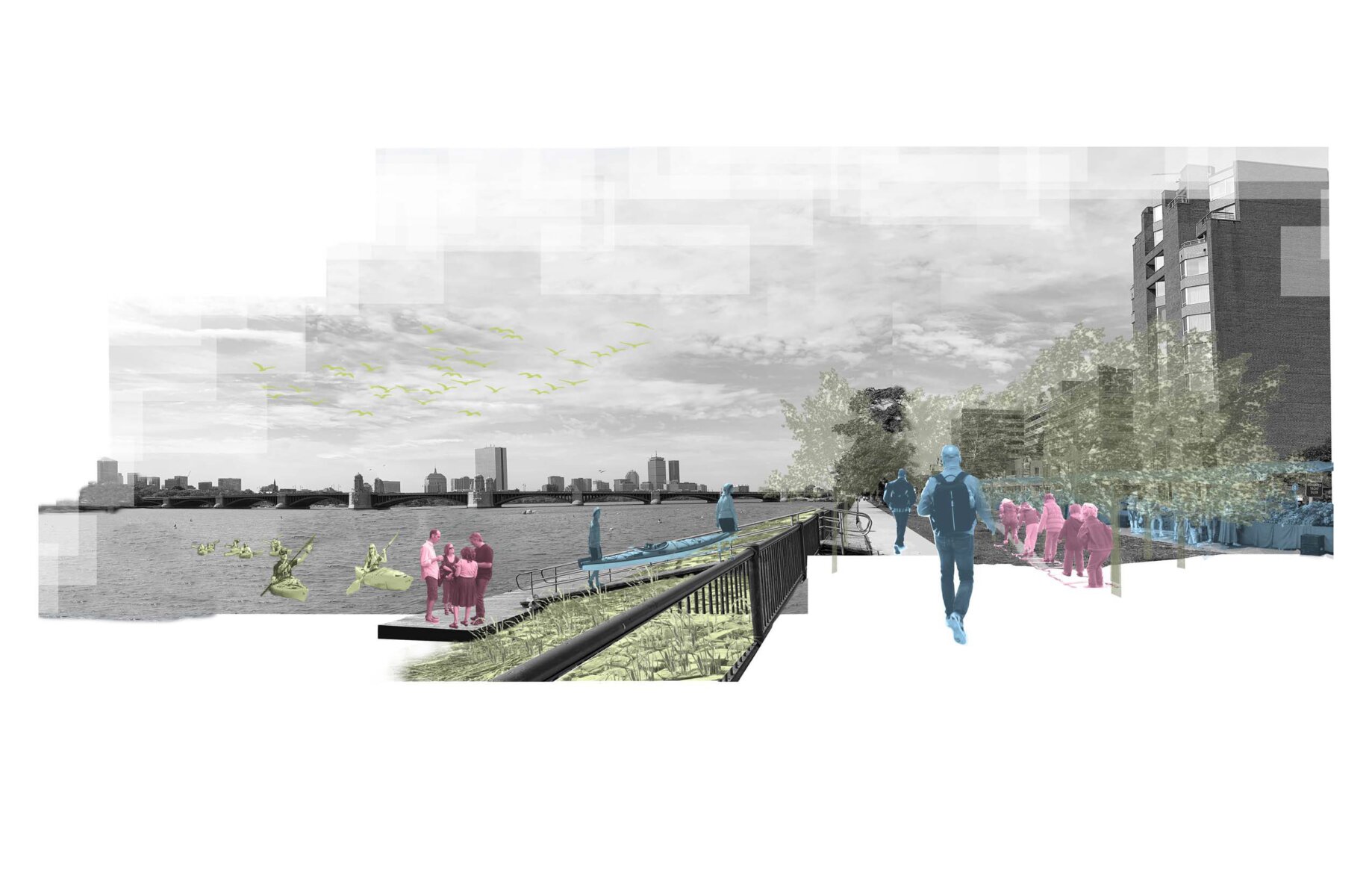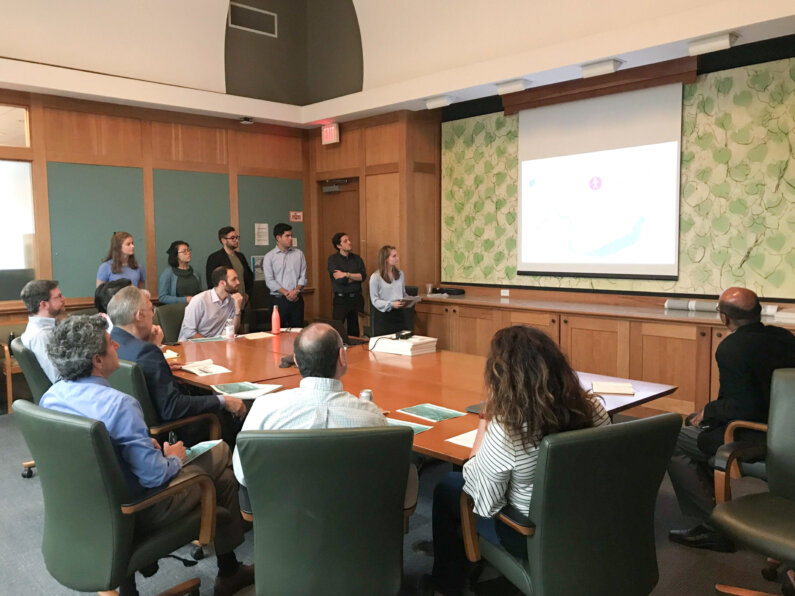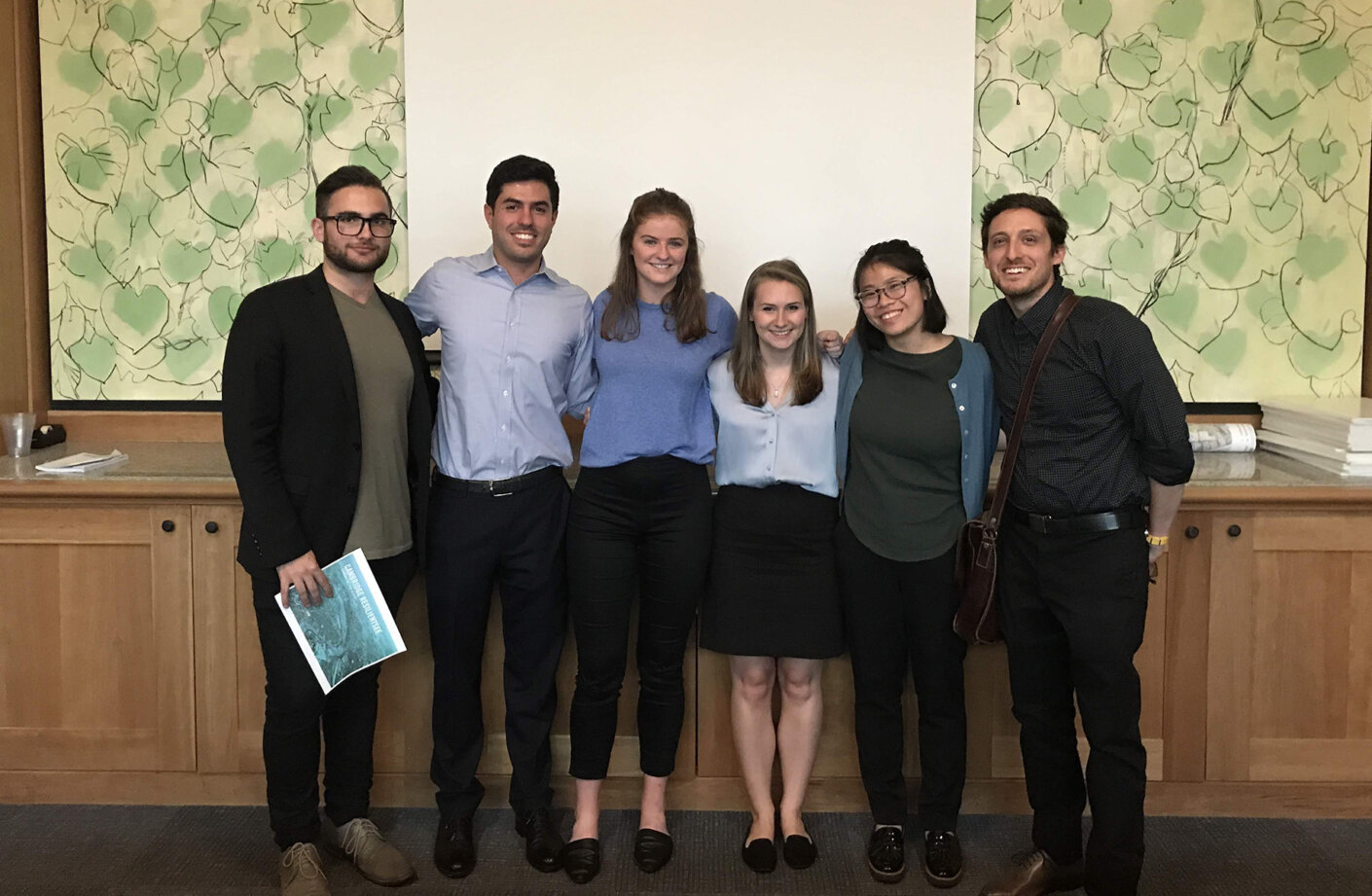If we were honest, some architectural internships could use a refresh.
Firms across the country are flooded with eager students applying each spring. After numerous career fairs and countless interviews, few are chosen for summer employment. Younger staff are embraced by their colleagues and engage in many office events, but it seems finding a way to leverage their unique skillsets – especially during a 3 month period – is difficult.
The question becomes – how does the contemporary architectural practice engage summer interns in a way that promotes their skills, encourages learning, and provides office exposure?
We sought to change this paradigm by assigning our summer staff a quick design sprint – a group urban design problem on the Charles River. Working closely with the City of Cambridge and Department of Public Works, we created a unique opportunity for (6) summer interns to work together on a one-week design charette: How would the City of Cambridge benefit from a re-imagined Charles River?
The following details the findings of their research through the ResilientSEE design methodology – applying Social, Environmental, and Economic lenses to large-scale urban problems. In this case, we tied each lens to a design question and series of provocations intended to promote implementable and phase-able design interventions – a menu of urban strategies that over time add up to a legible riverfront urbanism.
The following details the conclusions presented by our summer interns:
